It’s full-on fall across most of America, and that means it’s the best time of year to be out on the water if you’re a trout angler. Yes, you might have to wear an extra layer, or, if you’re like me, you’ll have to drag your waders out of storage because you’ve been wet-wading all summer, but these are mere annoyances. This is arguably the best time of year to chase trout, cooler temperatures and all.
And here’s why.
The crowds
Oh, those summer crowds. It’s an issue every summer, but the last two have been particularly brutal on this front, as newbies have stretched an already thin trout-fishing tapestry in their race to achieve social distance. We can’t blame them — they’re figuring out what we’ve known all along: fly fishing for trout is wicked fun. But Labor Day has long since passed, and we’re the die-hards who know that the calendar doesn’t depict fishable days. It’s amazing how quickly the crowds thinned once the official “end-of-summer” holiday disappeared into the rearview mirror.
We can thank the calendar for the loss of a few other folks on the water, though. Hunting season is upon us, and those who hunt often leave fly rods at home (as silly as that might be). If you’ve achieved pandemic “burn out” thanks to the hoards of folks discovering or rediscovering the craft, now’s the time to be fishing.
The weather
I don’t know how untenable summer got for everyone else, but I know that, in my neck of the woods, it was a scorcher. In some parts of the country, summer was downright lethal to trout — rivers were closed to fishing, fisheries managers cautioned anglers against fishing altogether, and the “keep them wet” movement achieved more and more converts thanks to a real sizzler of a summer. In some parts of the country, the latter part of summer has officially become “smoke season” thanks to all the wildfires springing up, and it hung on into October this year in some places.
But now, it’s damn near perfect outside, both for you and the trout. Add in the brilliant fall foliage and perfect water temperatures for trout, and all the ingredients are there for a great time on the water.
Big flies
Where I live, the browns are just now entering the throes of the spawn, and in some places across the country, where fall arrives a bit later, the spawn is coming. Pre-spawn browns are aggressive as they store up the needed energy to get busy laying eggs or fertilizing eggs, so they’re more likely to move on large patterns this time of year than at any other time. For the record, I don’t recommend fishing for trout on redds—in fact, I don’t think that’s sporting at all. But whenever trout spawn, other trout species line up to the egg buffet. It’s a great time to throw high-visibility patterns like Egg-sucking Leeches, Glo-bugs and even pegged beads. In salmon country, big flesh flies are the name of the game as trout gobble up decaying remains of spawned out fish. Where I live, the rainbows are the egg thieves. Let them eat eggs!
The flows
In some rivers, particularly in the West, fall marks the end of the irrigation season, and that means water managers will stop artificially pushing water through reservoir systems and start letting dams fill back up. This means lower flows and easier wading — in some instances, these lower flows make it possible to wade water that, only a scant few weeks ago, would have proven dangerous to anyone trying to wade. Now, flows are down, water is clear and cold … it’s time to test out the waders for the first time since last winter.
The bugs
Fall hatches are predictable and often prolific. My favorite fall hatch is the Blue-winged Olive — a diminutive mayfly, this cool-weather hatch comes off like clockwork on most viable trout rivers across the country. I look for unsettled and overcast days on the river for the best BWO hatches, and I’m rarely disappointed.
But, particularly in early fall before that first really hard freeze, there are still terrestrial bugs on the edges of trout water. It’s a great time to cast a double-dry rig to working fish—consider an appropriately sized hopper pattern trailed by a size 18 to 22 BWO. It’s a killer rig (and for guys like me who have almost zero chance of seeing a size 22 BWO on the water, the hopper serves as a nice little indicator — when a rise comes behind the big fly, set the hook).
Final word
I’ll be the first to admit … fall makes me a bit melancholy. With it comes cooler, blustery weather, shorter days, and that slip into dormancy that makes me want to hibernate and binge-watch “Billions.” But for a few weeks, anyway, it’s also an inspiring time of year to be a fly fisher, and with lower flows, smaller crowds and the chance to throw big flies or match dependable hatches, it might honestly be the best time of the year to string up a fly rod.
Don’t waste these precious days. Before you know it, the snow will fly and you’ll be switching gears to dredge trout up from snow-lined rivers. I’m too damned old for that game, but I’m not too old to chase trout during this oft-maligned “shoulder season.”
Get out there. Fall comes but once a year.




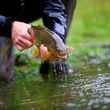
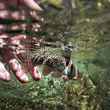
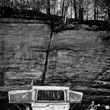





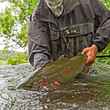




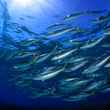



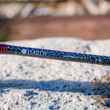
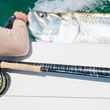




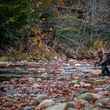

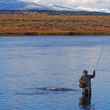
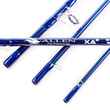
Comments
Brian Kozminski replied on Permalink
Agree, Completely. In the Great Lakes, most are chasing salmonids- leaving plenty of open rivers to chase trout with little to no traffic, Bugs are scarce, but when you get a pleasant October afternoon, plenty of BWO's and late season bugs make it worthwhile to have a dry rod. Tight Lines! Koz
steven matthews replied on Permalink
Packing right now.
Pages